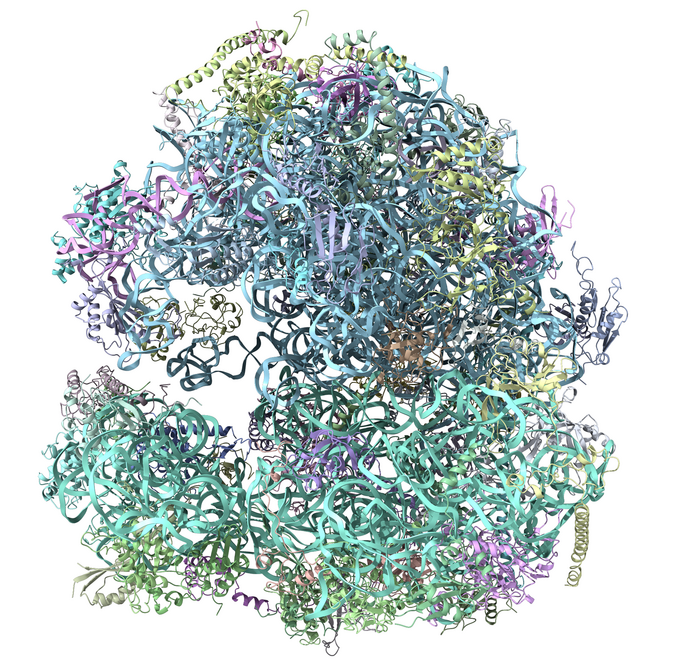Cryo-electron microscopy was employed by Uppsala University researchers to reveal information on the protein synthesis mechanism in the parasite Giardia intestinalis, which causes diarrhea. The new findings could help in the development of specific medicines to combat Giardia and other protozoan parasites.
 Cryo-EM structure of Giardia ribosome at 2.95 Å resolution. Image Credit: Andrew Emmerich
Cryo-EM structure of Giardia ribosome at 2.95 Å resolution. Image Credit: Andrew Emmerich
The extremely potent technology known as cryo-electron microscopy (cryo-EM) allows for the highly magnified visualization of cellular machinery. The biological samples are safeguarded against damage and distortion by the cryogenic setup, which allows seeing cellular activities as a sequence of images with molecular details.
Cryo-EM has recently played a key role in revealing the processes involved in protein synthesis in a variety of species, including humans and bacteria. The method of protein synthesis in protozoan organisms, a group of single-celled creatures that frequently infests humans and other animals, remained unknown.
In 2020, Professor Suparna Sanyal of Uppsala and her colleagues, including Dr Soneya Majumdar and PhD student Andrew Emmerich, undertook the difficult task of elucidating the specifics of protein synthesis in Giardia intestinalis.
Giardia is an important research topic since it not only causes unpleasant diarrhea in animals but also serves as a model system for far more harmful protozoan parasites.
Professor Staffan Svärd, an expert on Giardia at Uppsala University, collaborated with the study team to produce Giardia and purify native ribosomes, which function as the cell’s protein factory. The Uppsala University facility was equipped with cryo-EM grids, and the SciLifeLab facility’s Ume node used cryo-EM to collect data.
They resolved high-resolution structures of six different states of elongation of Giardia protein synthesis after two years of arduous labor.
The sequential changes in the ribosome structure, the movement of the tRNAs, and the binding and release of the translation elongation factor eEF2—all necessary for protein synthesis in Giardia and other protozoa—could all be seen in a video showcasing these novel structures.
Moreover, Sanyal and colleagues were able to identify key distinctions between the Giardia ribosome and bacterial and human ribosomes, which could be useful for testing certain drugs for the treatment of Giardia and other protozoan parasites.
Source:
Journal reference:
Majumdar, S., et al. (2023). Insights into translocation mechanism and ribosome evolution from cryo-EM structures of translocation intermediates of Giardia intestinalis. Nucleic Acids Research. doi.org/10.1093/nar/gkad176